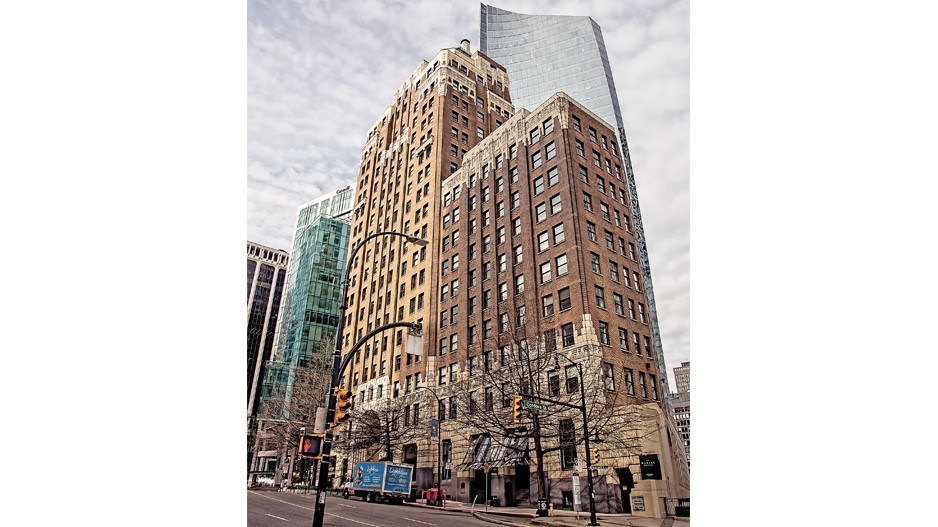Don’t look up from your shopping screens, but bricks-and-mortar retail is now the foundation for the biggest real estate developments and more than $600 million in investments in B.C., a year after the start of a pandemic that was forecast to drive the final nail into the coffin of storefront shopping.
The metrics do appear brutal.
In 2020’s last half, Canada’s total retail vacancy rate increased 1% to 4.1%, the largest six-month increase on record.
“Vacancy rates in the retail sector are expected to move up dramatically into 2021, leading to a decline in market rents,” says a Fiera Real Estate retail outlook released in February. “On the demand side, 40 brands announced the closing of all their stores in Canada since March 2020 representing 1,100 stores that will close in 2021.”
The outlook was among the many gloomy forecasts for the sector. Canadian retailers finished 2020 with $606 billion in sales, down 1.4% from 2019. This was the largest annual decline since the 2009 recession, according to Statistics Canada, but lower than many expected when COVID-19 began.
B.C. was an outlier, posting a 2.3% year-over-year increase in consumer spending in 2020 to lead the entire country.
However, despite a 70% surge in online shopping last year, e-commerce accounted for less than 6% of Canada’s retail trade in 2020, StatCan data shows.
So, if face-to-face retail is indeed at death’s door, some of B.C.’s largest and most experienced developers failed to get the memo.
This year, approximately 3.2 million square feet of new retail space is either under construction or nearly completed from downtown Vancouver to the eastern Fraser Valley.
Shape Properties is now ushering the latest big-name tenants into 1.1 million square feet of retail space recently finished at its Amazing Brentwood development in North Burnaby.
A few SkyTrain stops later, more than 1.5 million square feet of shopping space is the foundation of the $7 billion City of Lougheed development, also by Shape, on the Burnaby-Coquitlam border.
Latimer Village, the largest mixed-use development in the Township of Langley, includes 34,000 square feet of retail space, and 60% of the space is leased, though it’s not scheduled to be completed until 2022.
In South Surrey, Bosa Commercial included 50,000 square feet of retail in its twin-tower Miramar Village that completed in late 2020.
Retail is also embedded in the majority of the new office and residential towers arising in Surrey’s downtown.
In downtown Vancouver, QuadReal Property Group’s Post development – one of the largest new commercial projects in B.C. – will include 185,000 square feet of retail, anchored by a massive 50,000-square-foot Loblaws (TSX:L), which will be the largest grocery store downtown when it opens next year.
Cadillac Fairview’s flagship Pacific Centre mall is replacing its landmark Georgia Street annex to add 14,000 square feet of retail over three floors, with all the space claimed for a new Apple (Nasdaq:AAPL) outlet.
The 28-acre Oakridge Centre is touted as the single biggest real estate development in Vancouver’s history, according to co-developers QuadReal and Westbank Corp. It will deliver nearly 500,000 square feet of new retail, including a massive new Hudson’s Bay (TSX:HBC) store, when it opens in 2024. The existing 574,000-square-foot shopping centre will be transformed into a 4.5-million-square-foot hub of retail, residential, workspace, parks and civic space.
But bricks-and-mortar retail is the foundation of it all.
Retail assets selling
Meanwhile, existing retail properties in B.C. continue to be in demand.
In 2020’s fourth quarter, sales of Metro Vancouver retail properties soared 50% in volume compared with the same period in 2019, according to Altus Group, which expressed “surprise” at the increase.
In all, Avison Young reports, sales of retail property in B.C. in 2020 reached 46 deals valued at $606 million.
In terms of dollar volume, the overall value fell to its lowest point since 2009, but sales increased sharply as the year ended.
The $276 million in sales during the last three months of 2020 included the 139,000-square-foot Trenant Park Square, a Delta shopping centre, which sold for $64.5 million to Keltic Canada Development, and the December sale of London Plaza in Richmond, closing for $57 million.
Investors Group sold the 108,000-square-foot plaza to a private investor for $538 per square foot.
Some of the larger Metro retail asset sales, agents suggest, are for future mixed-use development, likely with a larger retail component and residential.
Vancouver Island posted the largest retail asset sale in 2020’s second half, when Nanaimo’s Woodgrove Centre was sold for $99.9 million to a new, private investor who emigrated from China.
“Investor’s and developers are not wrong. We will see a gradual bricks-and-mortar revival,” said Neil McAllister, senior vice-president of retail with Lee and Associates, a Vancouver real estate agency. “Online shopping has made huge gains, especially due to the pandemic, but consumers are experiencing shipping errors, hassle of returns and even increased pilferage of packages. There is an opportunity for bricks-and-mortar retailers to regain lost market share.” •




